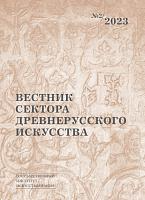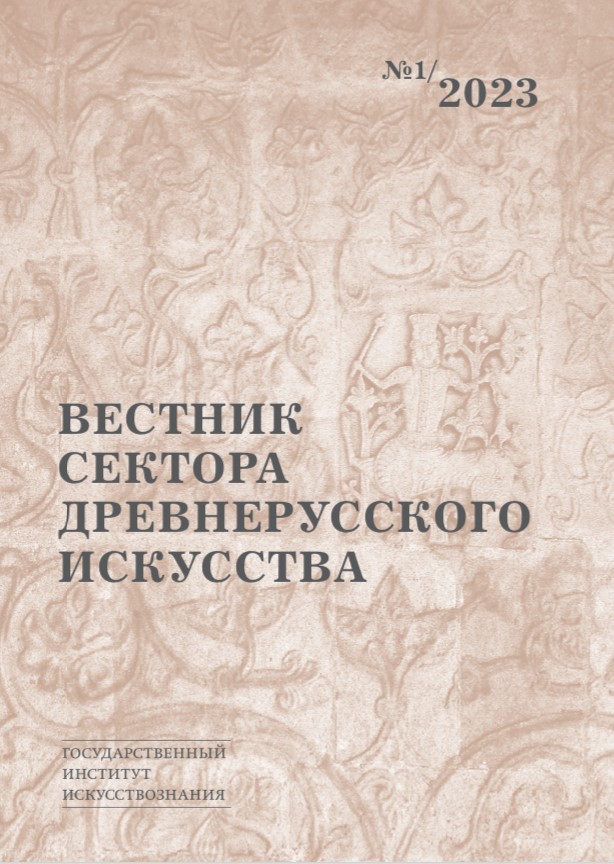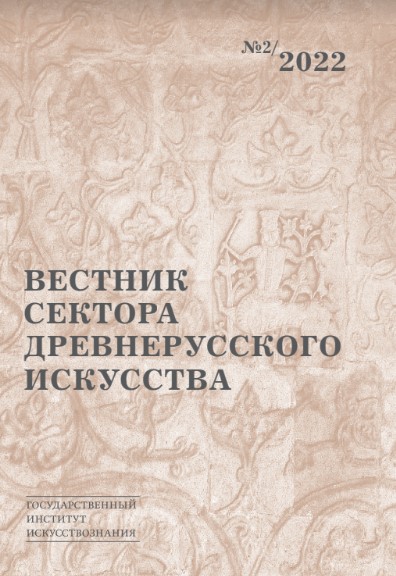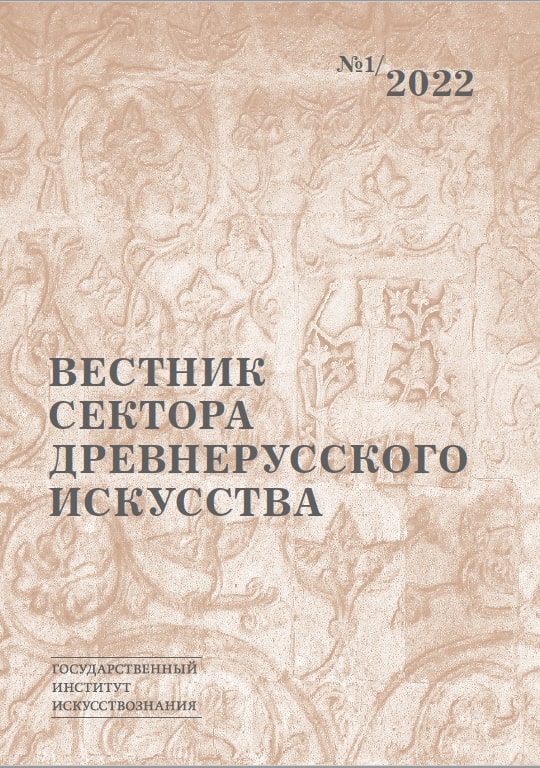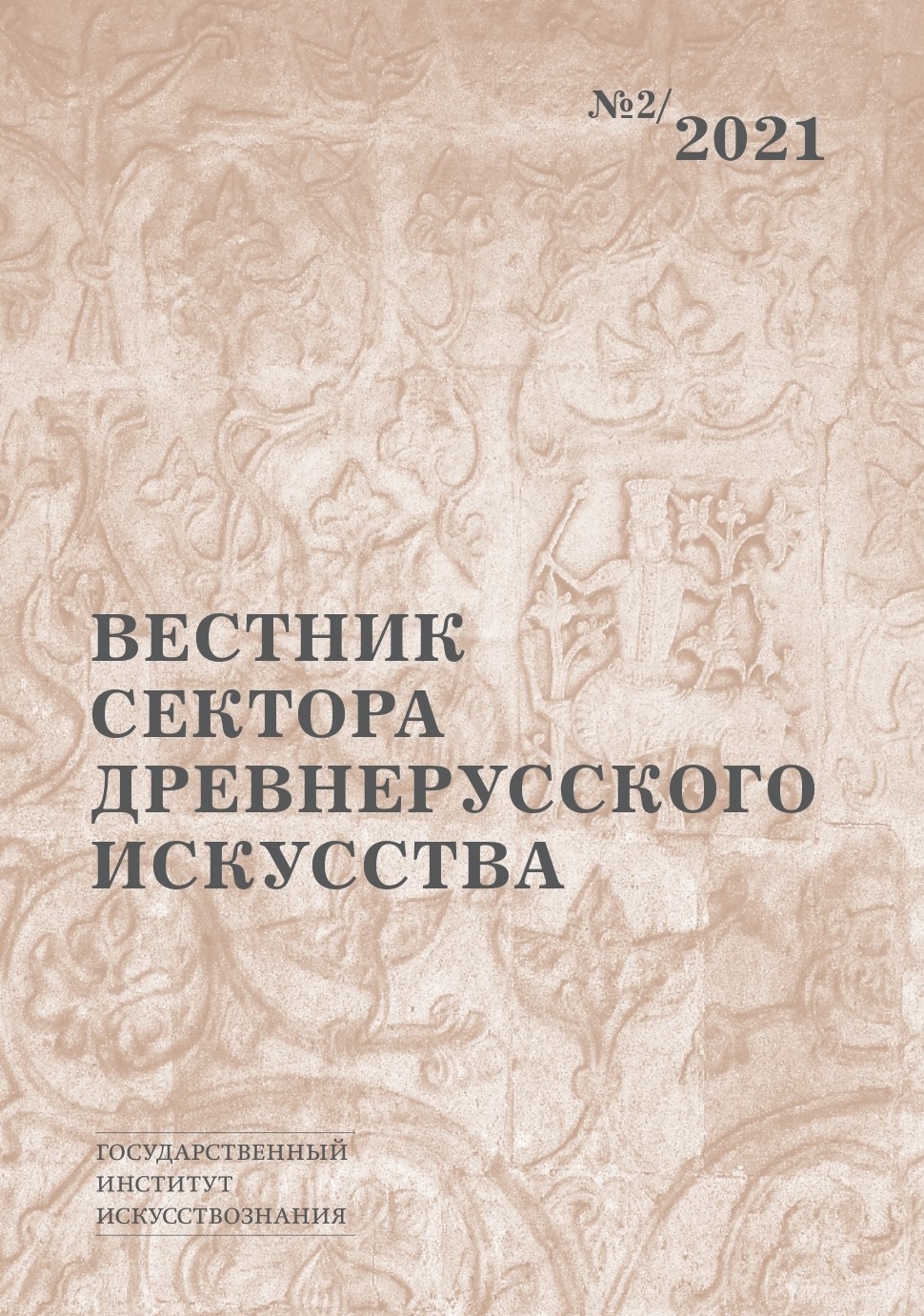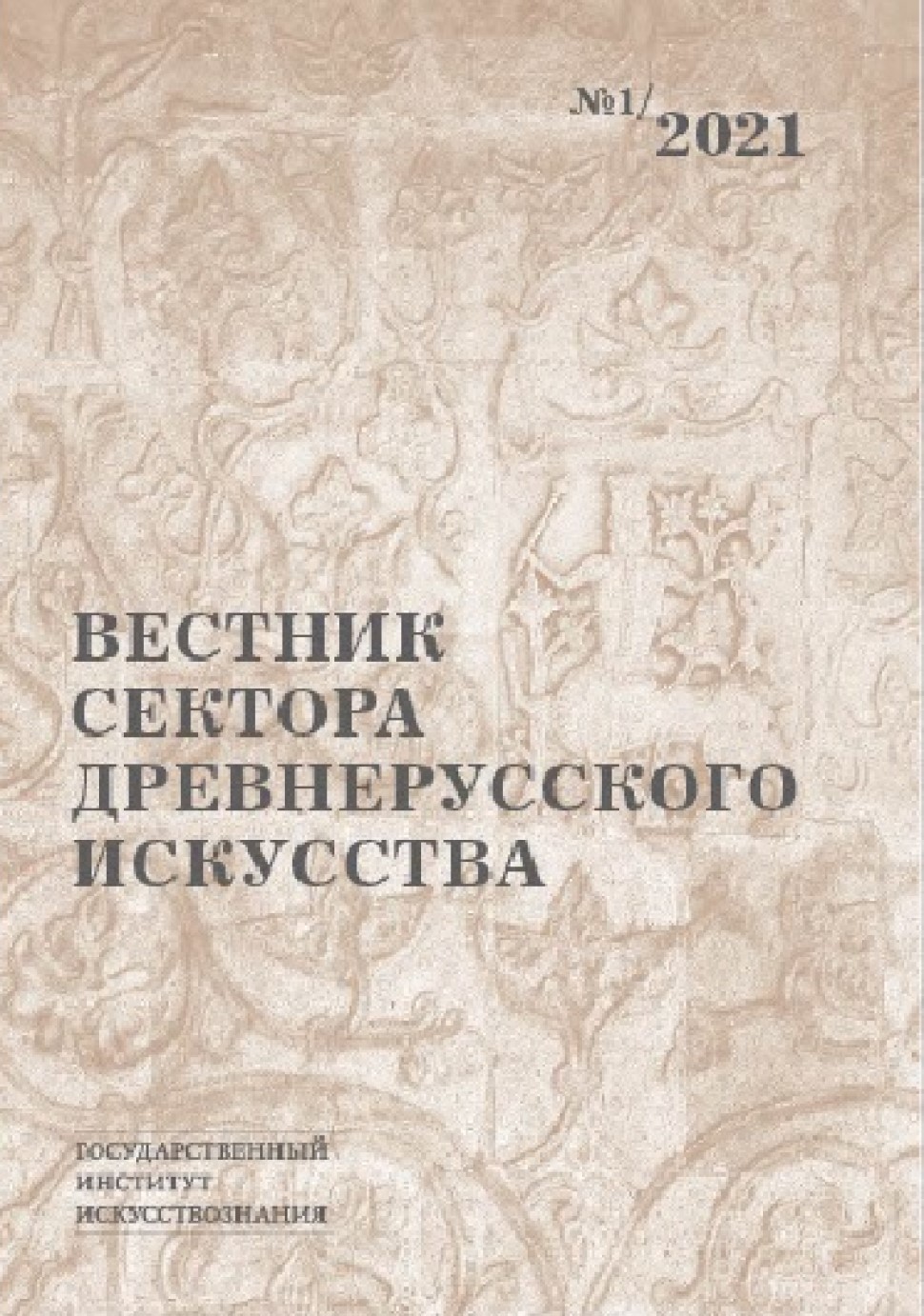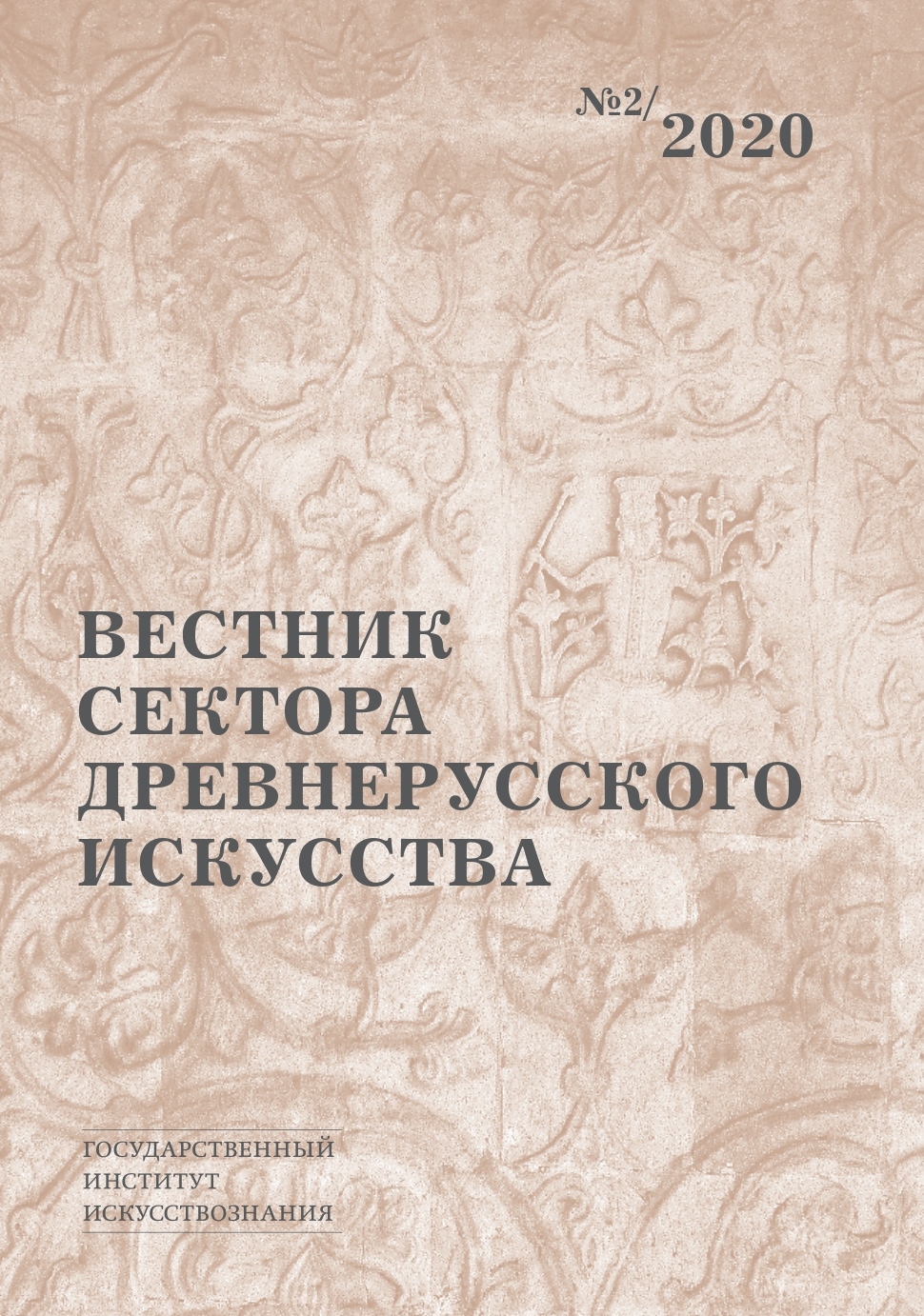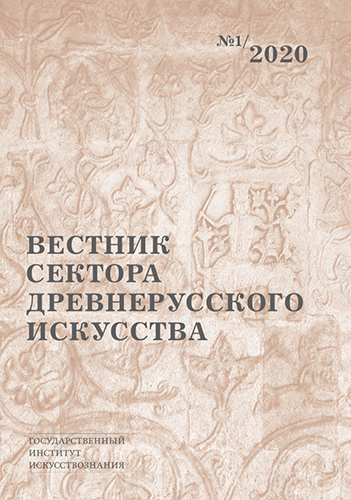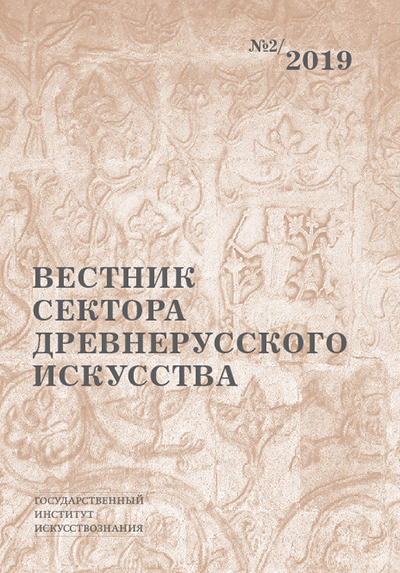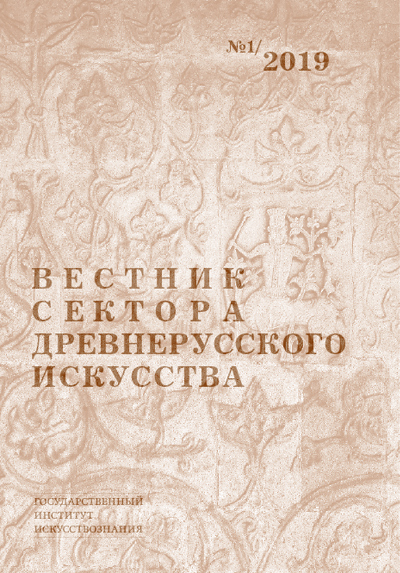2019 ¹ 1
Articles
Plioukhanova (Pliukhanova) Maria B.Pokrov and Znamenie in Novgorod and Pskov in the 14th Century
Abstract
The paper presents the hypothesis that the cult of the icon of Our Lady of the Sign (Znamenie), which had been preserved in Novgorod for many centuries, had different meanings in various periods. The idea that the commemoration of the victory of the Novgorodians over the Suzdalians in 1170 with the help of the Icon of the Sign is celebrated on November 27 and was strengthened at the end of the 14th — beginning of the 15th century, when ecclesiastical narration about this miracle appeared. Some data from liturgical manuscripts and chronicles suggest that earlier, in the 14th century, the veneration of the Sign was closely related to the celebration of the Protection (Pokrov) of Our Lady. The value of the Pokrov for Novgorod grows during the 14th century, becoming especially powerful during periods of the plague in Pskov and Novgorod in the early 1350s and in 1389–90. The worship of the Sign (Znamenie) of the Virgin is closely related to the miracle of crying icons of the Virgin. The Church of the Sign was built one year after the Novgorod plague. Later, in similar circumstances, the miracles from Pskov icons appeared.
Keywords
Novgorod the Great of the 14th century, Miraculous icons of Novgorod and Pskov, the Protection (Pokrov) of Our Lady, Our Lady of the Sign (Znamenie), Liturgies in honour of the icons of the Mother of God.
Orlova Maria A.On One of the Motifs of the Carving of St. George’s Cathedral in Yuryev-Polsky
Abstract
The article discusses the unique motif of the front carving of St. George’s Cathedral in Yuryev-Polsky which consists of alternating lion and human masks, united by stylized vine branches. Once having the character of a frieze, it is not found in any known architectural monuments of Vladimir-Suzdal Russia. The semantics of this motive is connected with the themes of death and resurrection. One of the versions explaining its presence on the facades may be the connection with the funerary purpose of the church which was intended to become a place of rest for both Prince Svyatoslav himself, the builder of the cathedral, and the entire Svyatoslavich family. Initially it could be conceived as a temple-tomb.
Keywords
Vladimir-Suzdal architecture, facade carving, mascarons, purpose.
Sterligova Irina A.Studying the “Mongolian” Period in the History of Old Russian Toreutics
Abstract
The time of Russia’s annexation by the Ulus of Jochi of the Mongolian Empire is associated with significant changes in Old Russian toreutics and cannot be assessed only as a “forced pause”. The gold and silver business was closely connected with the tastes and way of life of the old Russian feudal elite; Russian princes spent long periods at the khan’s courtyards, assimilated the customs and court ceremonial of the conquerors. Therefore the appearance of the jewels quickly changed. Complicated and expensive artistic technologies, adopted by Rus from Byzantium, give way to new forms and ornaments, going back to the patterns found in the Golden Horde. These changes would not have been possible without mastering the new techniques of gold and silver with the help of the masters themselves. Although few objects have survived, it can be argued that it was in that era that the foundations of the Russian late medieval “patterns” were laid. Therefore, it is wrong to evaluate toreutics of the Horde period only from the standpoint of the history of culture of the Russian ethnos (or the Russian Slavonic proto-nation), which only leads to outdated opinions about the indigenousness of the national culture.
Keywords
Old Russian toreutics of the “Mongolian” period, problems of study, types of status jewelry, Golden Horde models and masters.
Abstract
The article reflects an experimental attempt to schematically outline the basic spatial characteristics of the Savior Transfiguration Cathedral in Tver for the period of its existence from the time it was built at the end of the 13th with possible additions by the end of the 14th century. The basis is the results of archaeological excavations at the site of the cathedral in the Tver Kremlin (2010–2014, Institute of Archaelogy, Russian Academy of Sciences) and the main characteristics of the plan obtained. The sizes, proportions and other features are compared with the well-known studies of the monuments of Russia, primarily North-West, but also with the temples of the Polotsk-Smolensk land. The conclusions about the type and construction of the monument, its chronology and features of the decor are taken into account. All this allows us to propose a hypothetical reconstruction of the cathedral as a single-domed, four-column temple with a three-part altar, galleries on three sides and chapels in the eastern parts (the walls from the east are straight without external curvatures). The cathedral stood on a terrain that slopes to the south and thus required to introduce additional substructions on this side and put a high white-stone porch.
Keywords
Architectural reconstruction, archaeological excavations, architecture of Old Russia, Tver, Transfiguration Cathedral, appanage period.
Abstract
The authors of the sacred texts — the evangelists, the prophet David, the authors of the Liturgy (especially John Chrysostom) — are often depicted in Russian medieval mauscripts. Their figures occupy a preeminent position there, as compared with narrative compositions illustrating the text and figures of those saints whose acts are described in the book. However, unlike in the books of Moscow and North-Eastern Russia, in Novgorod’s books of the period under consideration compositions with authors writing or reflecting sitting at the table in a three-quarter turn are not as common as frontal figures facing the viewer. Such images provide a direct and more spiritual impact on the viewer. In most of the surviving works, the figure of the author is enclosed in a framing in the form of a temple, filled with teratological ornament. The motives and rhythm of this ornament, despite some simplification at the end of the XIV century, constitute the antithesis of that Byzantine tradition which is preserved in the images of the author’s figures.
Keywords
Manuscript, miniature, Novgorod, author’s portrait, teratology, ornament, temple.
Lifshits Lev I.On the Issues of Studying the Work of Andrei Rublev
Abstract
The article considers some methodological problems related to the studies of the work process of icon painters in Moscow at the turn of the 14th– 15th centuries. It also addresses the problem of identifying icons by Rublev, the artists who worked in his workshop or just his contemporaries. The focus is on the criteria for evaluating authorship.
Keywords
Andrei Rublev, circle of masters, icon painting, wall-painting, book miniature, technique, technology, style, authorship, workshop, attribution, evaluation criteria, expert assessment.
Abstract
The article is the first publication of the fresco composition “The Virgin and Child on the Throne”, assembled from archaeological fragments found in the St. Sophia Cathedral in Novgorod. Judging by the painting style and the place of discovery in the church, the composition is directly referenced in Avraamka’s Annals mentioning the painting on the pillars of St. Sophia Cathedral made in 1466 by order of the Novgorod archbishop Jonah. Being an intermediate link between the paintings of the Church of St. Sergius of Radonezh in Detinets and St. Simeon the God-Receiver in Zverin Monastery, it demonstrates the growth of iconic features as a characteristic trend of painting of this time. The published fresco is distinguished by the unusual iconography of Christ, whose blessing gesture and head turn are directed in different directions. Such a posture of the God-Infant is characteristic of the iconography “The Virgin of the Life-Giving Source”, the earliest examples of which are almost simultaneous to this fresco, as well as the later images of the Cretan school, combining the iconographic features of the Virgin enthroned and the Virgin of Life-Giving Source. Considering that the Novgorod fresco appeared earlier than these versions it can be assumed that, like the Cretan images, it followed a certain non-preserved Constantinople prototype. At the same time, it cannot be ruled out that the Novgorod master modified the iconography of the Mother of God on the throne with the saints, already known in Novgorod, trying to incorporate this honored image into the context of the shrines that already existed in the cathedral. This is suggested in the order of worship during the archbishop’s round of the church, mentioned in the literary sources.
Keywords
Monumental painting, fresco, iconography of the Virgin, the Virgin on the throne, Veliky Novgorod, Old Russian art, restoration, fragments of frescoes.
Abstract
The paper deals with a little-known monument of the 15th century Moscow painting — the icon of Epiphany (Baptism of Christ) from the private collection of the Vorob’ev family. Recently, an inscription containing the name of the icon painter was discovered on this work, but its text was published with lacunae, including the name of the artist. We offer our own reconstruction of the inscription based on different principles of its reading, which should be started from the right half of the text and continued in its left part. In addition, one should assume that the text in question was partly cryptographic. The new reading and decoding of the cryptographic fragment made it possible to assert that the icon was painted by some priest Ivan, who donated it to an unknown church. Apparently, this cleric was a relatively educated person who wanted to show both his knowledge of cryptography and of the subject depicted. He placed an inscription with his name in the cave in the right part of the icon, apparently expressing the idea that during the baptism the believer “is buried” with baptized Christ, in order to be resurrected with Him. Such a “visualized” type of inscriptions, rare for Russian icon painting of the 15th century, gives new information about the votive texts and their place in the concept of works.
Keywords
Medieval Russia, Russian icon painting, Moscow icon painting, 15th century art, iconography of Epiphany, inscriptions on icons, medieval artists, epigraphy, cryptography, private collections.
Abstract
The cathedral is traditionally dated at 1543/1544 year. It is clear from its architectural appearance that the builders wanted to repeat the structure of the facades and the details of the ornamental friezes of the Belozero churches of the late 15th century, unusual for the buildings of the 1530s–1540s. However, there are details that first appear in the Cathedral of Vasily the Blessed of 1555–1561. This allows us to attribute the church at least to the period after 1559 and until 1569. Such dating also corresponds to the general composition of the church, which originally had a northern aisle which is not typical of the architecture of the mid-century but is characteristic of a later period. Thus, two contradictory trends can be traced in the architecture of the cathedral, which form the uniqueness of the temple’s appearance — on the one hand, a conscious desire to turn to the earliest examples of Central Russian architecture in Belozero, and on the other hand to introduce elements of metropolitan architecture into the conservative architectural tradition.
Keywords
Belozerye, Old Russian architecture, Goritsky Monastery of Resurrection, Princess Euphrosyne Staritskaya, sample, ornamental frieze, Assumption Cathedral of the Kirillo-Belozersky Monastery.
Tarabarina Iuliia V.“Golitsyn” Repair of the Terem Palace as a Historiographical Myth
Abstract
The article, based on both study of published information and stylistic analysis of historical and architectural context of the 17th century, considers probability of Terem Palace repair in 1680s under the supervision of Golitsyn V. V. after the fire of November 1682. The author draws a conclusion that Terem Palace wasn’t significantly damaged in the fire of 1682, and its facades were not noticeably repaired in 1680s, its architectural appearance remained unchanged. The Palace suffered significant losses in the fires of 1696 and 1701, although even then its interiors were damaged more than its facades. The document of 1722 shows which parts of the interior’s carving were renewed: probably, the results of this renewal we can still see in the Palace interiors. In general, the Palace architectural appearance, namely: lobed arches and ‘drop ornaments’, carving character, Petition window (“Chelobitnoye okno”) with the pediment on columns, window gables with ornamental insertions — has survived to this very day from 1630s, and the most serious interference with its appearance was the stylistic renovation of the 19th century.
Keywords
Terem Palace, Amusement Palace, Miloslavsky Chambers, Holy Trinity Church in Nikitinki, the Moscow Kremlin, Palace of the Facets, the Russian architecture of the 17th century, history of the repairs, lobed arch, carving, Osip Startsev, V. V. Golitsyn, I. E. Zabelin.
Chronicles
Restoration Chronicles
Exhibitions
Samoilova Tat’iana E.The Exhibition The Tale of the City of Sviyazhsk. Tretyakov Gallery. 2018
Butyrskii Mikhail N.Capturing History: Byzantine and Old Russian Seals from Private Collections
Buzykina Iuliia N.Exhibitions in the Museum of the Russian Icon (2018–2019)
Ratomskaia Iuliia V.About the Exhibition Yu.S. Ushakov. Wooden Architecture of the Russian North
Shalina Irina A.Old Russian Events in St. Petersburg
Conferences
Preobrazhenskii Aleksandr S.Lazarev Readings (5–6 February 2019)
